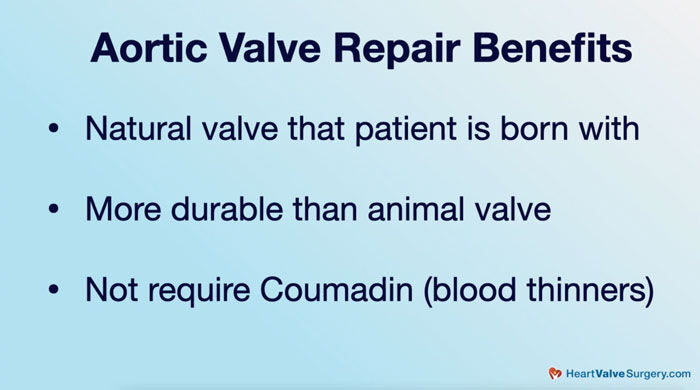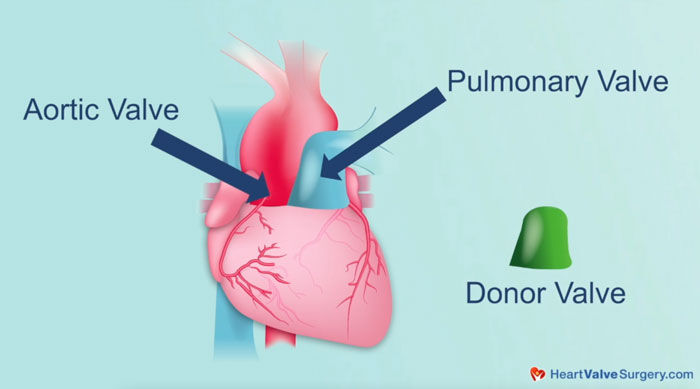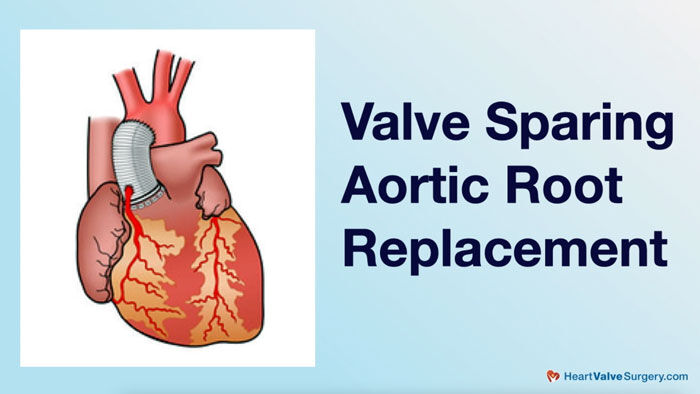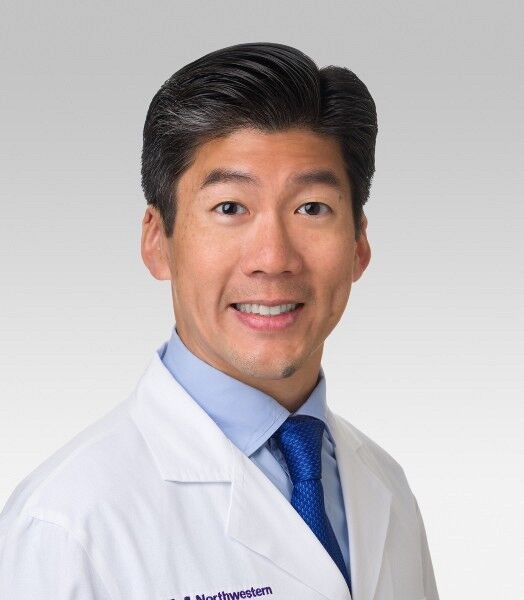Aortic Valve Reconstruction Surgery: Patient Advantages
Written By: Adam Pick, Patient Advocate & Author
Medical Expert: Chris Malaisrie, MD, Cardiac Surgeon, Northwestern Medicine
Published: October 26, 2022
The trend toward aortic valve reconstruction is gaining momentum.
In the past, aortic valve replacement with a mechanical or tissue valve was typically the only treatment available to patients. Today, patients have multiple options for the treatment of aortic valve stenosis and aortic valve regurgitation via reconstructive techniques that often enable patients to retain their own native tissue.
To better understand the patient benefits of aortic valve reconstruction, we interviewed Dr. Chris Malaisrie, Professor of Cardiac Surgery at Northwestern University and the Co-Director of the Bicuspid Aortic Valve Clinic and the Thoracic Aortic Surgery Program at Northwestern Medicine in Chicago, Illinois. In our community, Dr. Malaisrie has successfully treated many patients including Jean Frank, John Pascarella and Tom Tansor.
Key Learnings About Aortic Valve Reconstruction
There were many important points in Dr. Malaisrie’s discussion for patients to consider:
- Aortic valve disease does not always require patients to undergo a traditional aortic valve replacement with a mechanical or tissue (e.g. cow or pig) heart valve.
- Select patients with leaking aortic valves, also called aortic regurgitation and aortic insufficiency, may benefit from an aortic valve repair instead of an aortic valve replacement.
- There are several benefits for patients who are able to get an aortic valve repair. Dr. Malaisrie states, “The benefit of having a repaired valve, it is a natural valve. It’s a valve that the patient is born with. The valve can be durable, more durable than an animal biologic valve, yet not require Coumadin long-term.”

- Patients with aortic valve prolapse are often candidates for aortic valve repair techniques that may include free margin plication, resection and annuloplasty (a ring to reinforce the annulus). “When we talk about prolapse, what happens is one of the leaflets doesn’t shut, but actually falls backwards into the heart,” states Dr. Malaisrie. “In this configuration, blood can rush backwards in a severe fashion, causing symptoms.”
- According to Dr. Malaisrie, for patients with repairable aortic valves, an annuloplasty ring reinforces the valve structure and helps prevent future dilation.
- An aortic valve may not be repairable due to aortic stenosis in which the valve is narrowed and/or calcified.
 Ross Procedure Diagram
Ross Procedure Diagram
- If a patient has an aortic valve that is not repairable, a unique form of aortic valve reconstruction known as the Ross Procedure, may provide patients a unique opportunity to retain their own heart valve tissue in the aortic position. Dr. Malaisrie states, “We could also replace the aortic valve with the patient’s own pulmonary valve. Again, this is a natural valve, a valve that a patient is born with. We call this the Ross procedure. The Ross procedure is a technical operation. It is a double-valved procedure. We take the pulmonary valve, put it in the aortic position, and then we pull off of the shelf – it’s actually in the freezer – a human pulmonary valve to replace the patient’s pulmonary valve. It is a technical procedure, but it has very good benefits as well.”
- As patients with aortic valve disease are also diagnosed with aortic aneurysms, there are aortic valve reconstruction techniques to treat these cardiac disorders while retaining the native tissue in the aortic valve. These advanced techniques are known as “valve-sparing” procedures as the patient’s aortic valve tissue is spared (not removed). Dr. Malaisrie states, “This operation is super, because sometimes aortic valve is totally normal. All the patient has is an aortic aneurysm, and we don’t want to throw away the perfectly good aortic valve. We want to do an aortic root replacement that spares aortic valve. That is a great option for patients.”

- Dr. Malaisrie’s advice of patients with aortic valve disease is to research all of the options available to you. “It’s important to go see a specialist who can offer the full gamut of options for patients with aortic valve disease,” states Dr. Malaisrie.
Thanks Dr. Malaisrie & Northwestern Medicine!
On behalf of our patient community, I would like to thank Dr. Chris Malaisrie for taking the time to share his clinical experiences and research specific to the patient advantages of aortic valve reconstruction. I would also like to thank the entire Northwestern Medicine team for taking such great care of heart valve patients.
Keep on tickin!
Adam
Video Transcript:
Adam Pick: Hi, everybody. It’s Adam with heartvalvesurgery.com. This is a special surgeon question and answer session all about the advantages of the aortic valve reconstruction techniques, including aortic valve repair, the Ross procedure, and valve-sparing aortic root replacement. I am thrilled to be joined by Dr. Chris Malaisrie, who’s a professor of cardiac surgery and a leading aortic surgeon at Northwestern Medicine in Chicago, Illinois. During his extraordinary career, Dr. Malaisrie has performed thousands of cardiac procedures with many, including aortic valve repairs and aortic valve replacements. Dr. Malaisrie, it is great to see you again. Thanks for being here today.
Dr. Chris Malaisrie: Thank you very much, Adam. Thanks for having me.
Adam Pick: Dr. Malaisrie, you have been a champion of heartvalvesurgery.com over the years. You’ve educated our community. You’ve also successfully treated many patients, including Jean Frank, Tom Tansor, John Pascarella. Just want to take a quick moment and thank you for the care that you’re providing all the great patients in our community.
Dr. Chris Malaisrie: We’d also like to thank the patients for giving their patient testimonials. It means so much for everyone else who’s struggled with heart valve disease to hear what it’s like to go through heart valve surgery and the success that we can have.
Adam Pick: Perfectly said. Let’s now talk, Dr. Malaisrie, about one of your specialties, which is aortic valve reconstruction. To start, the first question for you is what are the advantages of an aortic valve repair compared to an aortic valve replacement?
Dr. Chris Malaisrie: This is an important point, because all aortic valve disease do not require an artificial valve. Some conditions can be repaired. The condition that we’re speaking of here is aortic valves that are leaky. We also call that aortic regurgitation or aortic insufficiency. The valves themselves don’t hold blood back from going back into the heart, but they do open fully, so the leaflets are more viable and pliable. These valves are very good for repair. The benefit of having a repaired valve, it is a natural valve. It’s a valve that the patient’s born with. The valve can be durable, more durable than an animal biologic valve, yet not require Coumadin long-term.
Adam Pick: Dr. Malaisrie, can you talk about the surgical techniques that you and your team there at Northwestern Medicine are using to repair a diseased aortic valve?
Dr. Chris Malaisrie: The most common reason that aortic valves leak is because of prolapse. This is a condition where the leaflets are redundant. They fall backwards into the heart. These valves are very reparable. The technique for repairing that is to repair the leaflet that is prolapsing. We can do a free margin plication, which is tightening up the leaflet edge. If it’s an extensive prolapse, we can resect part of that. We’ll finish the operation by reinforcing the annulus, which is the ring around the aortic valve, to make sure that the dilation, any sort of dilation that’s present is fixed, and also stabilize the annulus so there is no future dilatation. That can result in improved durability.
Adam Pick: Dr. Malaisrie, for a patient who may not exactly know what a prolapsed aortic valve is, can you show what that means?
Dr. Chris Malaisrie: In order to understand what a prolapse is, you have to understand the two major functions of an aortic valve. Aortic valves should open fully when the heart beats to allow unrestricted blood flow to the rest of the body. When the heart relaxes, the valves shut like this. That prevents any blood flow from going back into the heart. When we talk about prolapse, what happens is if one of the leaflets doesn’t shut, but actually falls backwards into the heart. In this configuration, blood can rush backwards in a severe fashion, causing symptoms. These valves can be very reparable.
Adam Pick: Dr. Malaisrie, that was super helpful learning about prolapse and how you can repair it in the aortic valve. I’ve got to ask, if a patient has an unreparable valve, let’s say with severe aortic stenosis, is there any reconstructive technique you can provide that would help the patient keep his or her own tissue in the aortic valve.
Dr. Chris Malaisrie: Sure, the aortic valve is unreparable. We could also replace the aortic valve with the patient’s own pulmonary valve. Again, this is a natural valve, a valve that a patient is born with. We call this the Ross procedure. The Ross procedure is a technical operation. It is a double-valved procedure. We take the pulmonary valve, put it in the aortic position, and then we pull off of the shelf – it’s actually in the freezer – a human pulmonary valve to replace the patient’s pulmonary valve. It is a technical procedure, but it has very good benefits as well. We can avoid all the complications like a valve repair of artificial valves, including infective endocarditis – this is infection of the valve – thromboembolism and anticoagulation, just clotting and bleeding, and hopefully avoid reoperations. We’re hoping that the durability of the Ross procedure can be as good as any valve repair.
Adam Pick: Dr. Malaisrie, as you may know, I had a Ross procedure before, back in 2005. I’m 16 years out, free from reoperation. I understand that the Ross procedure is going through a reemergence, a renaissance. Can you talk about why the Ross procedure is now becoming such a busy part of your practice?
Dr. Chris Malaisrie: We have been very encouraged with the results recently of newer techniques for the Ross procedure. The Ross procedure is one of the older procedures we do in cardiac surgery. It was actually thought of my Dr. Donald Ross, because there was no good option for artificial valves at that time, either mechanical or biologic animal valves. Dr. Ross was forced to do this Ross procedure. Now fast-forward 30, 40 years from there, the Ross procedure now has become so refined that we can see durability as good as what you are seeing. We’re hoping that your case in particular, Adam, is the norm for patients getting Ross procedures.
Adam Pick: Dr. Malaisrie, shifting gears a little bit, aortic valve disease is often accompanied by aortic aneurysms. I’m curious to know what you and your team there at Northwestern Medicine are working on to spare or save the patient’s living valve or its own living aortic tissue?
Dr. Chris Malaisrie: Aortic valve disease can be associated with aneurysms and vice versa. Aneurysms can exist with totally normal aortic valves. We’re talking about aortic root aneurysms. We’re talking about an aortic root replacement. What is that? An aortic root replacement is when we replace both the aortic valve and the aortic aneurysm at the same time with a construct that’s called a valved conduit or a composite valve graft. This is the device that has a valve already preconstructed onto a Dacron graft. We change everything at once.
It’s a great operation. The downside is the patient gets an artificial valve. Hence comes in the valve-sparing aortic root replacement, which is a great operation. This operation is super, because sometimes aortic valve is totally normal. All the patient has is an aortic aneurysm, and we don’t want to throw away the perfectly good aortic valve. We want to do an aortic root replacement that spares aortic valve. That is a great option for patients.
Adam Pick: Dr. Malaisrie, I love learning about all the techniques you’re using to reconstruct aortic valves and aortic roots. I’m curious to know what advice might you have for a patient?
Dr. Chris Malaisrie: When you see the doctor with aortic valve disease, patients have to understand that valve replacement isn’t the only option. There are other options that exist. We’ve already talked about today the option of an aortic valve repair. Both tri-leaflet and patients with bicuspid aortic valve can get a valve repair. Another group of patients that can benefit from a valve repair or a valve-sparing aortic root replacement are patients with aortic root aneurysms. That’s another subset of patients. Finally, patients even with aortic stenosis don’t need to get a valve replaced with an artificial valve. They can get a Ross procedure. It’s important to go see a specialist who can offer the full gamut of options for patients with aortic valve disease.
Adam Pick: Dr. Malaisrie, I cannot thank you enough for taking time away from your very busy practice there at Northwestern Medicine in Chicago, Illinois and educating all of us about the interesting and durable techniques that you’re using to help patients repair and/or replace their aortic valves. Thanks so much for being with us.
Dr. Chris Malaisrie: Thank you very much, Adam.
Adam Pick: Hi, everybody. It’s Adam. I hope you enjoyed that video. Don’t forget you can always subscribe to our YouTube channel, watch the next two educational videos coming up on your screen, or click the blue button to visit heartvalvesurgery.com.






